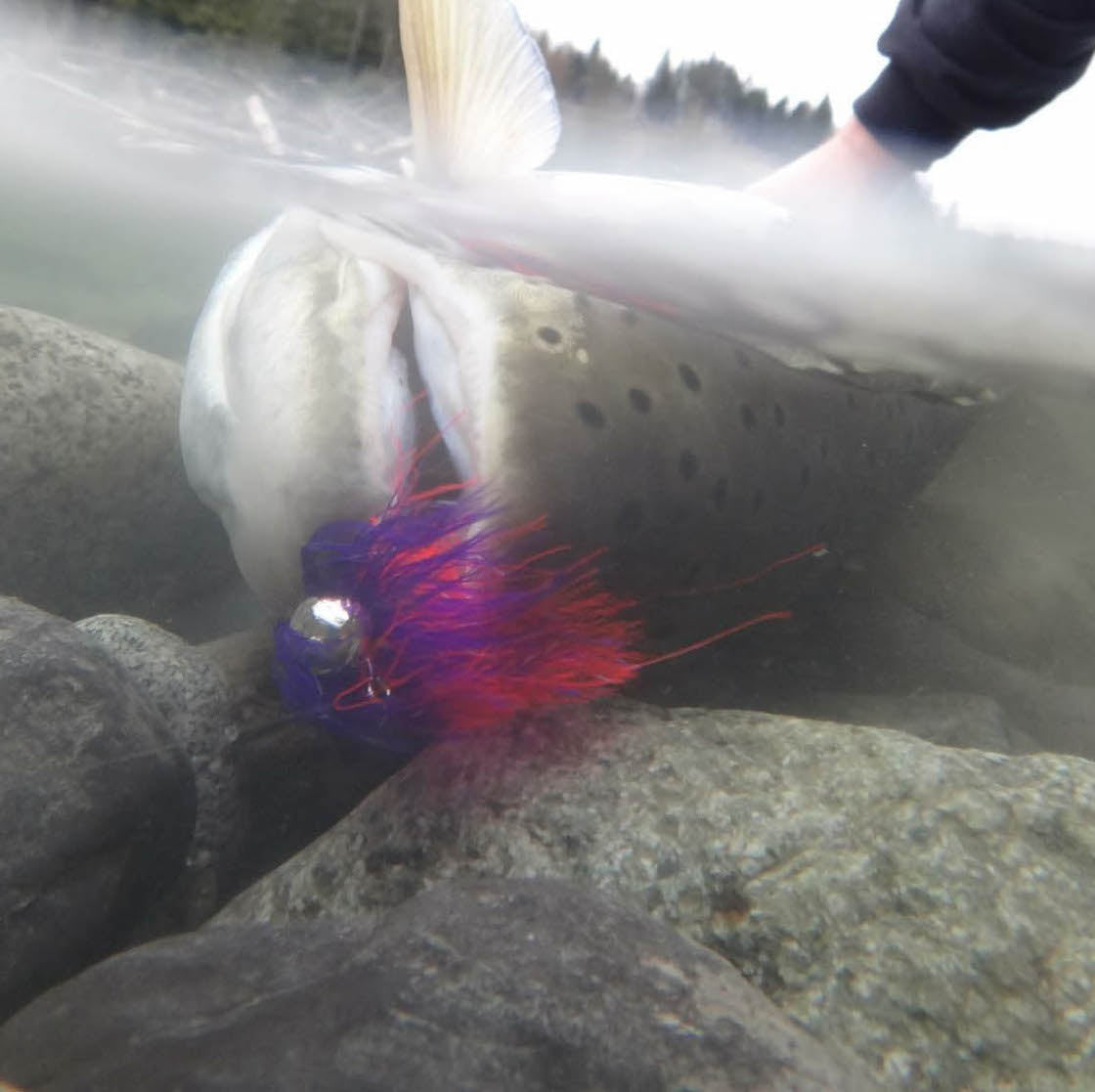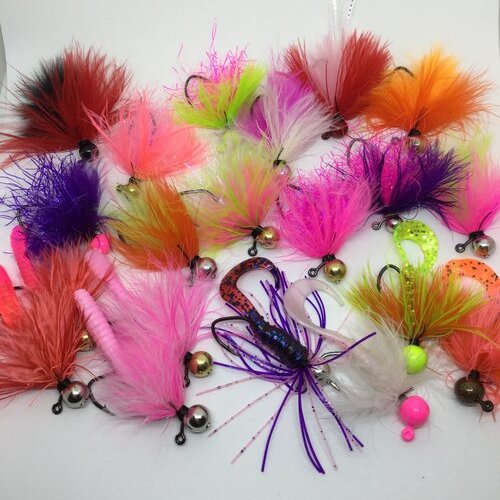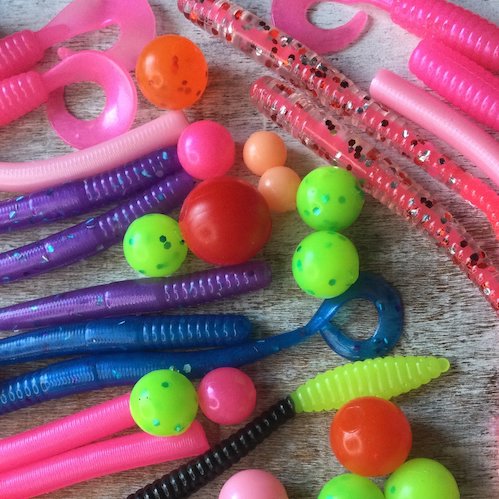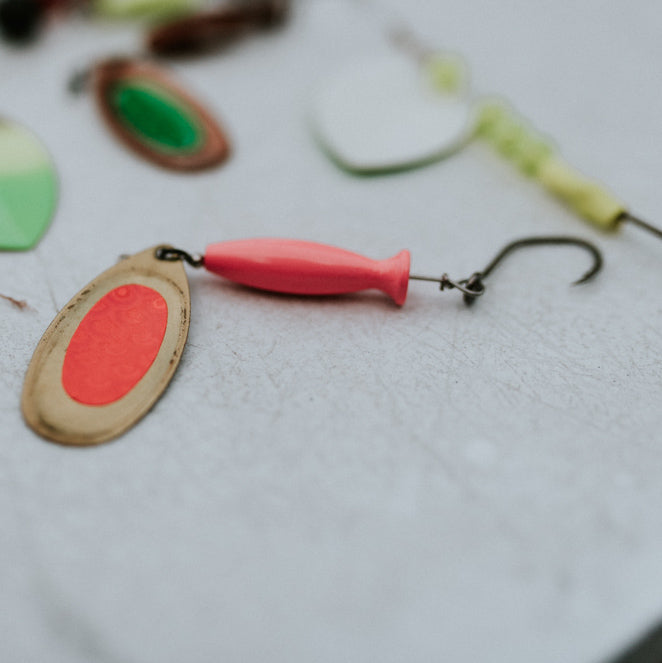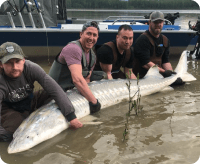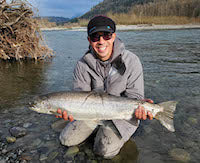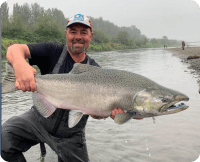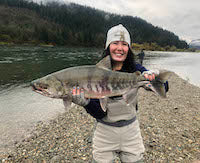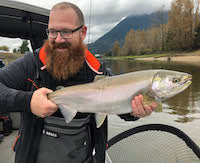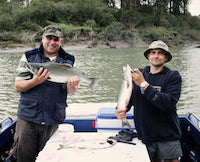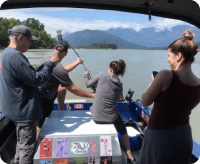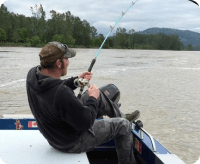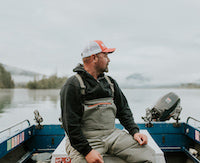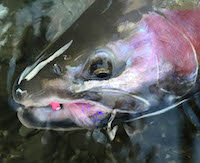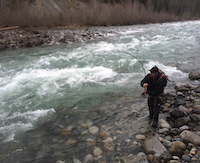One aspect of fishing not often discussed, is game planning.
As a fishing guide, having a solid game plan for each day of fishing is essential to my success. For the average angler, often only able to fish one day a week at best, a solid game plan is absolutely essential. There are many factors to consider when creating your game plan, and I'll try to break down my process in simplicity. For the purpose of this article, I will focus on building a game plan for river fishing Salmon and Steelhead.
RUN TIMING
As Salmon and Steelhead make their return from the ocean, timing of the run is very important to the angler. Early in a run of Salmon or Steelhead, a majority of the fish will be lower in the river system, so at that time I like to focus my efforts closer to the mouth of the river I’m fishing. Typically, these fresh arriving fish are aggressive and willing biters.
As more fish move into the river, I venture further up the river system in a quest to locate spots where fish will gather, and to seek out key travel lanes to interrupt them. One of the best ways to track this upstream movement of fish is to be part of a group of anglers who share their findings. Within a small community of anglers who are sharing their respective experiences, each person’s success can be greatly increased.
Another way to track Salmon and Steelhead run timing is by keeping a journal. A journal will allow you to look back and see the run timing from past seasons, which over the years, will provide you with an overview of what to expect, and a starting point for mapping out your timing and locations.
For new anglers, another useful tool can be following other anglers on social media. This can help guide you to when and maybe where to get started in your quest. Most experienced anglers don’t rely on this intel, but it is a valuable resource for those new to fishing or new to a certain area- particularly if they have a limited time frame. While I share this as an option to have in your arsenal, I strongly encourage you to learn the run timing and then YOU can be ahead of the pack, catching fish and building your own personal game plan.
CHOOSING YOUR METHOD OF FISHING
Now that we have run timing figured out, we can move on to deciding how we will target the fish.
What tackle will we use? What lures or bait will we bring?
For this portion of planning, it is very important to have a chosen species of fish.
I often see anglers loaded up with three types of fishing rods, in an attempt to catch multiple species of Salmon in one day. While this may seem like a good idea at times when various species of Salmon are present, the downside is that you sacrifice your river mobility and can lose the focus required to catch any one of the species proficiently.
Typically I choose ONE species to target, and choose ONE method to perfect.
An example of this is in the early Fall, when I concentrate my efforts on Chinook Salmon.
These fish arrive in big numbers before the Coho Salmon, so I take this early season timing to be Chinook specific. Heavy tackle is required to catch Chinook Salmon, so I stick to my bigger float road and exclusively float fish. As the Fall progresses, I adjust my game plan to Coho Salmon fishing and can often be found on the river with nothing more than a light action spin rod with some spinners and twitching jigs.
Keep it simple. Pick your target fish. Choose your method of fishing.
This will greatly increase your success.
PLANNING FOR WEATHER (both past and present)
It is very important to know the river conditions. Is the river high or low? Is the water murky from past rain? Is the river low and clear from lack of rain? These are all important considerations as part of your game plan.
A good formula to reference for river fishing is; when the river is high- fish high on the river. When the river is low- fish low on the river.
Most rivers have a river level graph available online. Get to know the graph well and you will start to know exactly where to concentrate your efforts, based on the river level. As part of my game planning, I am constantly watching reports on the weather, river levels, and tides. These are free and readily available resources which can provide excellent information to help you in building your plan.
KEEPING A FISHING JOURNAL
As a professional fisherman, I know the immense value of keeping a fishing journal and strongly encourage others to do so… although I personally have never been able to stick with it! I have tried many times, but my consistency wanes shortly after I start, each and every time.
Being so frequently on the water actively fishing, and having been so for so many years, I have been able to consistently catch fish without the aid of a journal. I am quite confident however, that the consistent and continued keeping of a journal would benefit me greatly.
If you decide that keeping a fishing journal is a good fit for you, here are some points to consider recording consistently;
DATE, RIVER AND SPECIFIC LOCATION ON RIVER, RIVER LEVELS, WEATHER, METHOD FISHED, YOUR CATCHES, AND TIME OF DAY.
Investing the time and effort to record this data in your fishing journal will definitely reward you with improved fishing success, and an excellent tool in your game planning for seasons to come.
Of course the goal with fishing is always… to catch fish!
Having a good game plan will certainly result in more successful days on the river!
Good luck on the water! Tight lines, and BENT RODS!



